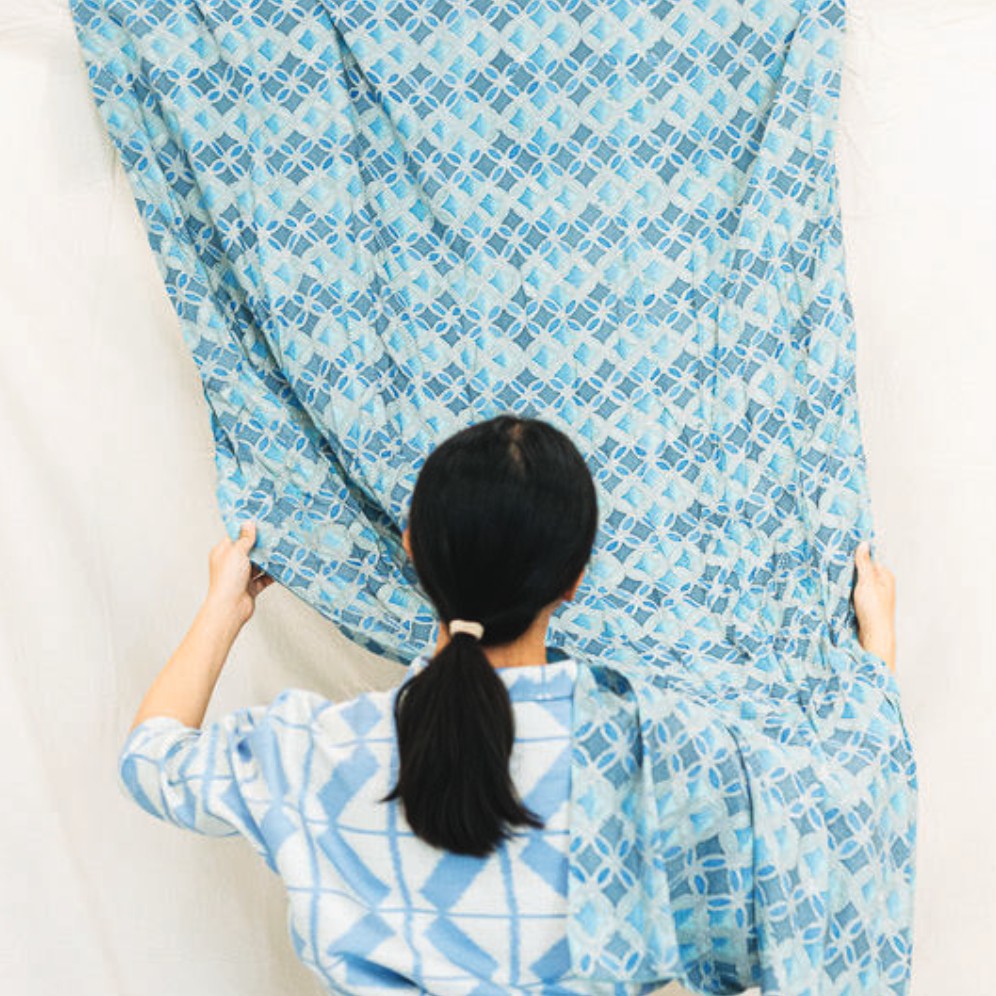That Fabric Care Guide
Because Thai fabric is a hand-woven fabric, pretreatment of fabrics before sewing will help prevent fabric shrinkage and color fall after sewing. If you have the knowledge and understanding, know the right methods and processes, it can be made by yourself and save money.

Conditioning the fabric before sewing
Hand-Woven Cotton: To wash the dough from the fiber preparation process, make the fibers tighten slightly, the fabric shrinks slightly more, it should be soaked overnight, or at least 30 - 60 minutes, change the water and a new soaking container. Add 1 tablespoon of vinegar, stir to dissolve, then soak the cloth again to prevent color from fading and reduce musty odors. Take it up, do not twist, but wrap the cloth and squeeze it gently. When dry, iron to the indicated level of heat.
Silk: Before sewing silk, let the dry cleaner bake it neatly to clean and condition the fibers so that they do not shrink. It helps soften and discard the fabric and make the fabric smooth and glossy. The fabric can be prevented from color-fading in the same way as cotton by soaking it in water with a tablespoon of vinegar. To dry the silk yourself, spray the silk fabric with clean water and dry ironing solution until it soaks the whole cloth. Fold them up small, roll them into plastic bags. Cover the bag and soak it in the freezer for about an hour, if there is no refrigerator, put it in a cool, windy place for 1 hour, and then gently unfold it, hang it in the shade.To clean, wash by hand with weak laundry detergent, soak the laundry for 30 minutes, gently crumple, rinse the water and squeeze out the water, do not twist, dry in the shade with wind, do not take Thai fabrics or Thai dresses directly into the sun, as this can cause fading. For ironing, use a fairly strong heat. Iron the inside of the fabric using a thin, fine white cloth covered over the fabric before ironing. Using an iron in one direction only, do not iron back and forth to prevent shadows on the fabric. The storing of Thai fabrics and Thai dresses: If it is necessary to hang, use a hanger with a thick shoulder span like a suit hanger, for long-sleeved shirts, rolls of paper should be inserted into the inner sleeve frame to maintain the shape of the sleeves. For fabrics, it should be hung on a round rail measuring about 1 - 2 centimeters. Folded fabric should be periodically reversed.
To clean
For ironing
The storing of Thai fabrics and Thai dresses
The storing of Thai fabrics and Thai dresses: If it is necessary to hang, use a hanger with a thick shoulder span like a suit hanger, for long-sleeved shirts, rolls of paper should be inserted into the inner sleeve frame to maintain the shape of the sleeves. For fabrics, it should be hung on a round rail measuring about 1 - 2 centimeters. Folded fabric should be periodically reversed.
The cabinet used to store Thai fabrics and Thai fabric dresses should be opaque cabinets. Located in a well-ventilated place. Put camphor on it to protect against insects.
For displaying, silk should be displayed in a well-lit cabinet. Water cups should be placed in the cabinet to increase humidity, preventing crispy dry silk.
With these basic understandings. This makes it possible to maintain beautiful Thai fabrics economically.